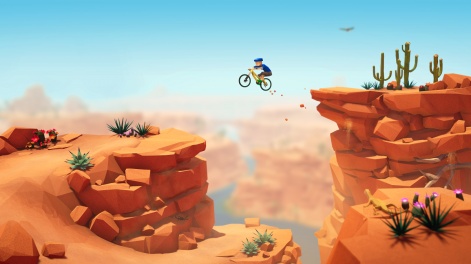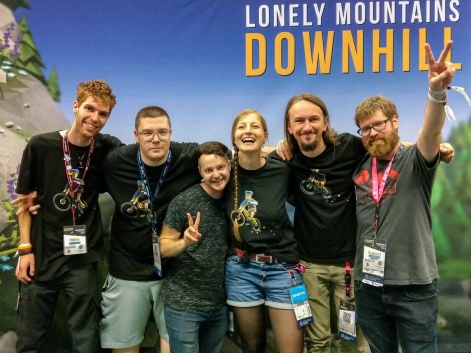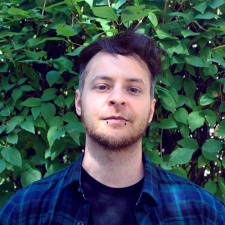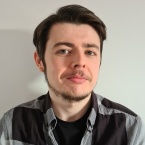The games industry plays host to a colourful cast of diverse individuals, from artists and coders to narrative designers and studio heads.
The skills to pull off these roles, however, are complex and differing, with each position requiring mastery in its field.
To highlight some of the brilliant work that goes on behind the screen, and help others who may be keen to dive in, PocketGamer.biz is reaching out to the individuals who make up the games industry with our Jobs in Games series.
This week we spoke with Megagon Industries art generalist Noah Carev.
PocketGamer.biz: Can you tell us about your current role and what it entails?
Noah Carev: Currently, I’m a 2D/3D artist at Megagon Industries. That means I‘m responsible for the visual development of Lonely Mountains: Downhill in both the 2D and 3D space, which includes concept art, key artworks for marketing, 3D modelling of environment props and customisation assets. I also do the level art which means that I place the final assets, flowers, pebbles, trees, particle effects, etcetera. in the game.
To work as a game artist means also to be able to work with new tools and workflows.Noah Carev
How did you first get into games and how did you progress into this role?
As a child, I often played an old computer game with my father. Unfortunately, I can‘t remember which one it was... since then my passion for games and consoles grew over the years and has never waned. I can still remember spending several hours at a time playing Pokémon on the first Game Boy Color, or entire days losing myself in the world of Hyrule in The Legend of Zelda: Ocarina of Time.
My first brush with actually making games myself was at an Innogames Game Jam in 2014. It was a life-changing experience and solidified my decision to work in the games industry. It felt right for me to combine my two great passions - games and art. In 2018, I completed a two-year education at the S4G School for Games in Berlin, before joining the Megagon Industries team later that year.
Is it something you ever imagined yourself doing?
Not at all. When I was a student I always focused on concept art and 2D in general. Luckily, I also learned the basics of 3D modelling and working in Unity, which we used for our student game projects.
When Daniel [Helbig] (co-founder of Megagon Industries) asked me to join the team, there was no work for a concept artist at the time, and it was mainly about doing 3D and level art. I still took the chance and now I can work as a 2D and 3D artist simultaneously, something I never would have imagined.
What did you study (if anything) to get your role? What courses would you advise for aspiring professionals in the area?
I studied Game Art at S4G School for Games with a focus on 2D and concept art. I also attended events as a volunteer or as a visitor to socialise and build up my network. This opportunity enabled me to get in touch with people in the game industry. There are always developers out there looking to hire talented people, so don’t be shy and speak to them!
My advice to aspiring game artists is to always be open to new things. If you are a student, visit a lot of different courses to find out what interests you most. It could be 3D modelling, anatomy drawing, or even animation. Enjoy exploring new things and the learning process. To work as a game artist means also to be able to work with new tools and workflows.

I wholeheartedly recommend getting to grips with 3D, contemporary game engines, or completely new tools like VR sculpting as soon as possible. Don’t be afraid to dive into unexplored areas - this industry moves fast and familiarising yourself with unique and new technologies/workflows could give you the upper hand.
What part of your role do you find most fulfilling?
The most fulfilling part is being able to tell stories about the environment itself. For Eldfjall Island, the DLC of Lonely Mountains: Downhill, I put a lot of thoughts into environmental storytelling. I see the world in every game as part of an ecosystem.
Like in the real world, every plant is growing because of its surroundings. Maybe it likes more water or managed to live in the desert. This has an impact on the shape, colour, etcetera. of each plant and makes it unique. Those rules can also be true for designing new worlds. To set up my own set of rules and create a world has always fascinated me, no matter the size or scope.
Tell us what your typical day looks like in a nutshell?
As I’m currently working in a home office environment, I start the working day with our morning call at 10 am. We talk about our daily tasks, make weekly plans at the beginning of the week, or discuss specific topics. After the call, I start to work on my tasks, where I mostly dig myself into the work until the end of the day.
Make it as clear as possible that your artistic knowledge fits the needs of your future employer.Noah Carev
What do you think are the biggest advantages and disadvantages of your role?
The biggest advantages to me are working in a creative environment and being able to create amazing worlds. To see an idea drawn on digital paper turn into something playable is incredible. Then to share it across the world and see people’s reaction is truly humbling.
The disadvantage is when you can’t stop working on a specific task because you stick to it. It's not necessarily that it has to be finished, but because you want to finish it. This happens more often when your work is also your hobby.
Do you think there are any misconceptions, public or professional, surrounding your area of expertise?
Sometimes I encounter misconceptions regarding my role as a game artist in public. Mostly
non-gaming people have never heard about game art and have no idea how my daily job could look like. Also, it’s not easy to explain how broad and different my tasks are.
Even explaining the full workflow from concept art to 3D modelling and working in Unity is a challenge. As concept art is perceived more and more, level art is not understood by many to mean anything concrete.
What advice do you have for someone looking for a job in this profession?
My advice is to tailor your portfolio to the company you want to apply to. Make it as clear as possible that your artistic knowledge fits the needs of your future employer.
How has remote working impacted the role (if at all)?
Working at home works amazingly well. Of course, it limits social contacts. Usually, we share our office with other indie game developers and have lunch together or a quick conversation during small breaks.

For a small company with three people, it’s easy to get updated and keep an overview. In summary, remote working doesn’t have a huge impact on me as an artist, but a significant one for social interaction.
Is there anything about the job/industry you wish you would have known when first joining?
Before I started to work at Megagon Industries I wish I had known more about 3D in general. I was too focused on concept art and prepared myself for a 2D job only. I wish I had explored more tools like Quixel or Marvelous Designer before. The good thing is, I can still learn all these tools. When it comes to game development, I think everyone always has to continuously learn new tricks, applications, engines, platform architectures, etcetera.
Finally, what other advice do you have for someone looking for a job in this profession?
To have a passion for games, art and be curious about how both are made is a good start. Pick something you think you might enjoy doing long term, keep pushing your skills and be open to change. Participate in game jams and get a first impression of making games by yourself or in a small team. If you feel comfortable showing your art on social media, do it!.
Get as much feedback as you can and learn from it. Additionally, I'd recommend having an Artstation account and start building your own portfolio and get inspired by other artists too.






















